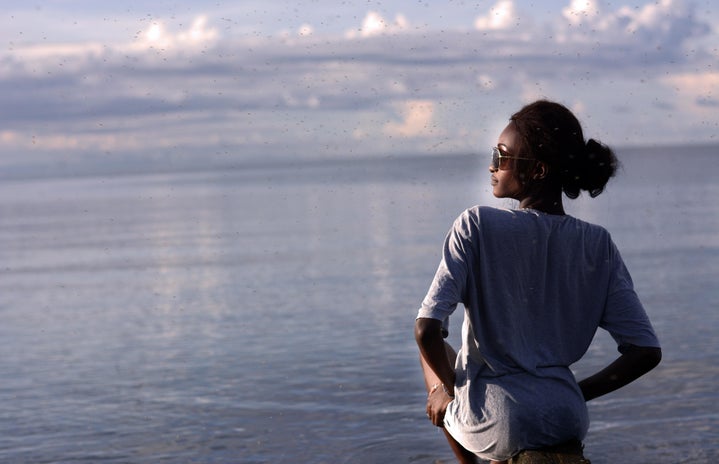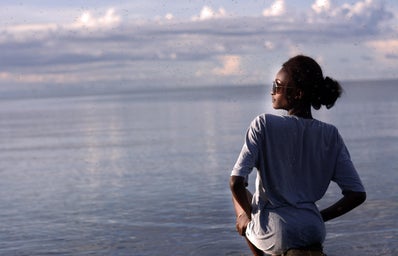A long-time professor here at Duke University, Dr. Robert Lefkowitz was the 2012 Nobel Laureate for Chemistry for his study of G-receptors; his work has had a significant impact on medicine, having influenced the treatment of blood-related diseases.
via: C&EN Safety Zone
1. How did you gravitate towards your work with G-receptors?
So, when I went to the National Institute of Health in 1968, receptors were not a big topic of study. In fact, there was no real consensus that they existed. But my mentors there, to their credit…both in their mid-80’s now, and both still scientifically active, great role models for me, had in their head that it might be possible to demonstrate directly the existence of receptors, by developing some new kinds of methods. But nobody had ever done that before. So I was set to work on the problem, and for a year and a half, I flailed, and I really got nowhere. But then during my final six months in their laboratory, I began to make some headway, came up with some preliminary evidence that favored the hypothesis that one could directly label receptors, with radioactively labeled materials. But then I left, to continue my clinical work. But while I [was at] the Massachusetts General Hospital, and during the first six months there, doing clinical work, I realized that I missed the laboratory.
And then there was a kind of confluence of events. One of the changes in medicine, between the time I finished my residency at Columbia in 1968 and when I returned to residency training in Boston in 1970, was the introduction of so-called beta-blockers, which are drugs which seem to block responses that might be mediated by a [particular kind of receptor], even though people didn’t in general believe [in its existence]. As a cardiology fellow, and retaining my interest in receptors from the NIH, I said “You know? That would be an interesting thing to work on.” So as a fellow in Boston I began trying to develop means of studying [the receptor], which was clearly of great cardiovascular interest. And as they say, the rest was history. One thing led to another, and I’ve been working on those and other receptors for half a century.
2. To what extent would say your groundbreaking findings were accidental, and to what extent do you believe they were intentioned?
Well, that’s a good question. There’s some of both. The intention was to first show that there was such a thing as a receptor. We did that. And the next thing was to purify it and show that it really does exist, that it’s an isolated molecule and that we can get it in a test tube as a pure solution, then put it back into an artificial membrane and show it does something. And we accomplished that, so so far it’s all by intention.
But then the next goal was to figure out what [the receptor] looks like. And at the time, we did that by DNA cloning methods, which allowed us to clone its gene and from its genetic code…deduce its complete amino acid sequence. And when we did that, [there] came the first really big surprise, which for us was lucky, because we saw in its protein sequence that it looked a lot like a particular protein in the eye, in that it had seven stretches of hydrophobic amino acids, which crisscrossed the plasma membrane, like a snake. And, there were certain functional analogies between the way [this protein] works in the eye and the way the receptor works…[so] we thought that [the protein and the receptor] were related and parts of a family of G-protein coupled receptors. And we were very quickly able to clone several additional receptors, and they all looked the same. So there was this mind-bending discovery that a large fraction of all the receptors in our body are really relatives of one another. And that had huge ramifications for how to study receptors, how to develop drugs for receptors, etc. So that was not by intent, that was fortuitous.
3. Almost like serendipity?
Serendipity, indeed. Meanwhile, the other major set of discoveries had to do with…my obsession with desensitization, the process by which almost all receptors shut down. I spent 20 years studying that, and interestingly, that work came to fruition right around the same time that we learned about the large family of receptors, which was late 80’s. We discovered the mechanism of desensitization, a two-step biochemical reaction, which involved two new classes of proteins, that we discovered. And again, what was by intention to figure out how it all worked, but we had no way of conceiving that we would need to discover new proteins. And those proteins turned out to be very important, not just for turning off the receptors, but for a variety of other functions. So there too, came serendipity. And I think if you look at many or most Nobel-prize winning discoveries, they are a mixture of intent and serendipity.
4. I would love to know more about the Stanford professor with whom you won the Nobel Prize—Brian Kobilka. How did he become your mentee, and what was it like working with him?
via: Live Reuters
Hmm…how did he become my mentee—again, by intent and by serendipity! So Brian and I had a lot in common in our background. You know my story of wanting to become a physician—well, the same was true of Brian. I was inspired by my family [doctor], he was inspired by his pediatrician…when he was a medical resident, he decided—like me, a generation before him—he wanted to become a cardiologist. So he was looking around for a cardiology fellowship program, but he was also interested in emergency medicine, and he thought he wanted to try some research. Because he was interested in [both cardiology and emergency medicine], as he was looking [through] the literature, he saw the name of Lefkowitz, who was studying receptors for adrenaline. Well that’s pretty cardiovascular, and it has to do with emergency medicine. So he came to interview at Duke for the cardiology fellowship, and asked if he could speak with me about my research. But I was out of town.
Subsequently, he made a second visit to Duke, wanting to look at the fellowship more closely. He again wanted to speak to me, and I was again out of town. So I never met him. But based on telephone conversation and what he had read, he decided to come work with me. And that’s how he came as a cardiology fellow. The cardiology fellowship is a four-year program, two years of clinical work and two years in the laboratory. And depending on your interests and various other things, you can do either the clinics first or the labs first; he opted to do the labs first. And by the time he finished two years, things were hot! So we did a third year in the lab, and then he went back and did I think just one year of clinical work. And that’s the story.
5. In the whole process of your research, what would you say have been your greatest obstacles, and how did you work through them?
Well, I think the greatest obstacle, to working on important scientific problems, is very simple. There are some things that are very, very, hard to do. I mean, for openers, you’re trying to do things which nobody ever did before. And if it’s an important problem, it’s in general not because nobody ever thought of it, it’s because nobody either had the guts to take it on, or, more probably, many people had taken it on and failed! So one of the toughest things is just how hard it is—there’s one.
Two, it takes a very long time. So…you have to be very patient. And, further compounding the problem, is that most of research is abject failure. You fail most of the time, and that’s hard to take. And I learned this lesson at the NIH, where for the first 18 out of 24 months there, nothing worked. And I was miserable. So, how do you learn how to deal with failure?
Well, I don’t know an easy answer to that. Later in your career, it’s easier, because you have a number of people working for you, so you have several projects—you know, it’s like trying to catch a fish. If you have eight lines over the side of the boat, you’re more likely to catch something, than if you only have one. And when you’re very early in your career, you only have one line. So, somehow, you have to learn how to keep the faith, even though, day-to-day, things seem pretty dark. And a lot of that has to do with what kind of personality you have. And I didn’t have the right personality, because I took it very hard, and I was miserable. Absolutely miserable. Eventually, over the years, I learned to deal with that—but yeah, my personality was not that of someone who always has the sunny disposition, who always says “Everything’s great! I know it’s going to work, it’s just tomorrow.” But looking back at my career, with all the important things we took on, I have to say, I never gave up on anything. And it never seriously bothered me that I might not succeed at all. I was always convinced that we would succeed, [but] what bugged the heck out of me was the fact that I didn’t know when. Whether it would take months or years…it turned out to be years. And in some cases, decades.

